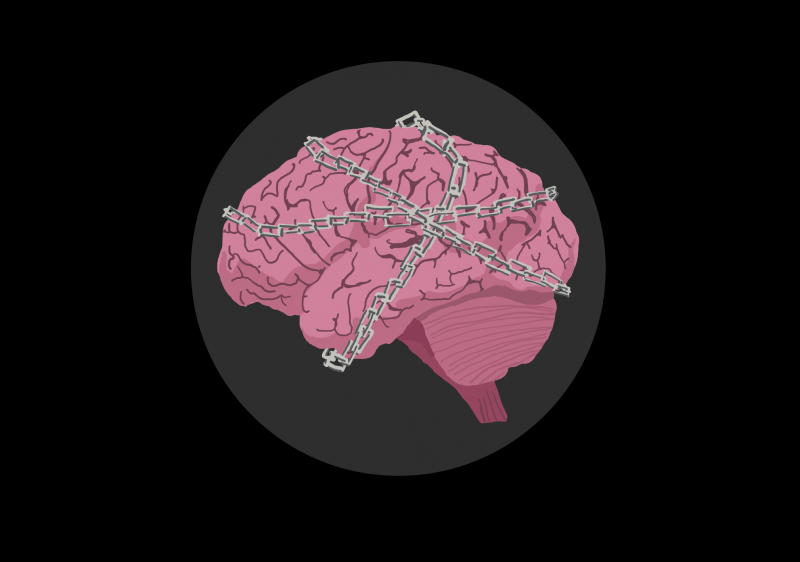What is Addiction
Addiction is a chronic dependence on a substance. The condition involves compulsive seeking and persistent use despite the negative contributions it provides to their life[1]. The disorder is classified as a disease and falls under the category of chronic brain disorders. Individuals can be addicted to substances and behaviors[1]. Common substances are caffeine, nicotine, alcohol, and opioids[1]. Typical behavior additions revolve around phone use, Gambling, and pornography[1].
Addiction and Glutamate
in the article, A review on the role of metabotropic glutamate receptors in neuroplasticity following psychostimulant use disorder, Researchers identified the influence of glutamate on the development of addiction.
Metabotropic Glutamate Receptors
These G-protein-coupled receptors modulate synaptic activity and affect long-term changes in neuronal activity.[2]
-
- Group I mGluRs (mGluR1 and mGluR5) are postsynaptic and enhance excitatory signaling. They are involved in synaptic plasticity and are highly expressed in brain regions important for cognition and reward, such as the hippocampus, thalamus, and striatum.[2]
- Group II mGluRs (mGluR2, mGluR3) are presynaptic and help modulate neurotransmitter release. mGluR2 is primarily presynaptic, while mGluR3 is found both presynaptically and postsynaptically and in glial cells.[2]
- Group III mGluRs ( mGluR7, mGluR8) have a more specialized distribution, affecting areas like the cerebellum, hippocampus, and olfactory bulb.[2]
How Addiction Affects Receptors
Group 1 mGluRs
- Amphetamine, methamphetamine, and nicotine modulate glutamate signaling via group I mGluRs[2]. Amphetamine upregulates in the mPFC, influencing synaptic plasticity and reward[2]. Methamphetamine enhances glutamate release and mGluR1-induced long-term synaptic depresion in the NAc, while mGluR antagonists reduce drug-seeking behavior[2].
Group 2 mGluRs
- Amphetamine, methamphetamine, and nicotine affect the brain’s reward system by changing how glutamate works. Amphetamine increases certain glutamate receptors (mGluR1/5) in the brain, which influences addiction and reward[2]. Methamphetamine boosts glutamate levels and strengthens certain brain connections, but blocking these receptors can reduce cravings[2]. Nicotine raises mGluR1 levels and helps with memory formation, reinforcing addiction[2].
Group 3 mGluRs
- Group 3 mGluRs (mGluR7 and mGluR8) help regulate drug-seeking behavior by controlling glutamate release[2]. Activating mGluR7 reduces cocaine-seeking, while mGluR8 levels rise after chronic drug use, possibly to counteract its effects[2]. In the hypothalamus, stimulating these receptors decreases cocaine-seeking after withdrawal, making them potential targets for addiction treatment[2].
Medications
Quitting a substance is a very painful and physically taxing process. To help ease the process, medication have been developed, but they mostly focus on opioid withdrawal. Several medications target opioid and glutamate receptors to help manage opioid dependence and withdrawal [3]. These drugs modulate neurotransmission, reducing cravings and withdrawal symptoms while also influencing pain perception [3]. Buprenorphine, a partial opioid receptor agonist [4], and methadone, a full opioid receptor agonist [5], both interact with glutamate receptors, contributing to their effectiveness in addiction treatment.
Buprenorphine

Methadone
Methadone is a synthetic opioid that fully activates mu-opioid receptors to relieve pain [4]. It also affects kappa and sigma opioid receptors in the nervous system [5]. Methadone also blocks the glutamate receptor NMDA and strongly inhibits serotonin and norepinephrine reuptake, causing pain relief [5].
Conclusion
Addiction is a chronic brain disorder driven by compulsive substance use and influenced by neurotransmitters like glutamate. It affects synaptic transmission, learning, and reward pathways. Medications like buprenorphine and methadone can help manage opioid withdrawal by targeting opioid and glutamate receptors. Understanding these mechanisms is key to improving addiction treatments.
[1]Cleveland Clinic. (2025, March 16). Addiction. https://my.clevelandclinic.org/health/diseases/6407-addiction
[2] Mozafari R, Karimi-Haghighi S, Fattahi M, Kalivas P, Haghparast A. A review on the role of metabotropic glutamate receptors in neuroplasticity following psychostimulant use disorder. Prog Neuropsychopharmacol Biol Psychiatry. 2023 Jun 8;124:110735. doi: 10.1016/j.pnpbp.2023.110735. Epub 2023 Feb 20. PMID: 36813105.
[3]Geoffrion, L. (2023, November 2). Common medications used for drug detox: Recovery first. Recovery First Treatment Center. https://recoveryfirst.org/detox/medications/
[4]Kumar, R. (2024, June 8). Buprenorphine. StatPearls. https://www.ncbi.nlm.nih.gov/books/NBK459126/#:~:text=Mechanism%20of%20Action,-Buprenorphine%20is%20a&text=Buprenorphine%20exhibits%20high%2Daffinity%20binding,withdrawal%20symptoms%20for%20the%20patient.
[5] DrugBank. (2025). DrugBank online | Database for Drug and Drug Target Info. https://go.drugbank.com/
